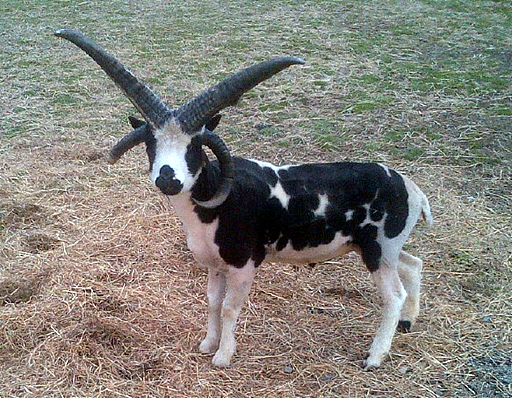
The modern conveniences of our day have insulated many of us from the rural rhythms of life. While we are not immune to the conveniences of modern life, at Shiloh we try to celebrate and orchestrate our days based on time honored patterns and practices that are tied to the earth. The emergence of peeper from their winter sleep signals planting time has arrived, when the locust and other flowering trees lose their bloom, we plan to extract honey from our hives. And as the days get longer and temperatures reach the 60s and 70s we plan to shear our sheep.
Shearing in the process by which the accumulation of winter wool is removed from a sheep using a special clipper. Once shorn, a sheep will then continue to grow a fresh coat of fleece. The process of shearing a sheep is back breaking work. Shearing is not cruel, but sheep rarely enjoy the process of being restrained and given a close cut!
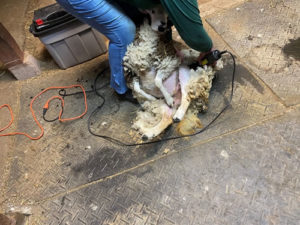
Lucy meets the stylist
Shearing is important not only to harvest and monetize the prior year’s fleece, but for also for the health of the animal. Sheep have been bred by humans for at least 10,000 years and nearly all sheep have lost the ability to naturally regulate the fleece they carry. Without regular shearing by humans, sheep would overheat in the summer, fall victim to predators due to reduced sight and mobility and be subject to a variety of skin diseases and parasites. Shearing is also critical to the survival of lambs, who upon birth need to quickly find their mother’s teats to nurse — sadly, lambs can die of starvation when there is too much wool in the way.
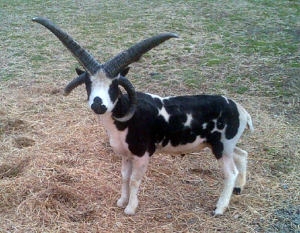
“Whew, it feels good to get rid of all that fleece!”
Ancient people understood and valued woolen clothing. Vegetable fibers are not as warm, water repellant nor as durable as wool, and animal skins are not as soft nor as insulating. Perhaps you are wondering, “what happened to sheep before people sheared them?” Before the electric clippers we use at Shiloh, there were hand shears – large scissors- which some people still use today. Before hand shears, ancient people would pull the wool that naturally came off the sheep, or “roux” the wool from the sheep. This process is reported to be traditionally done by women, who cradled and sang to the sheep as they peeled their coat off. Even further back, before sheep were domesticated (about 11,000-13,000 years ago), wool was cut when an animal was hunted and killed for meat.
Nowadays, because synthetic alternatives to wool comprise over 60% of world fiber consumption, people have an option to leave the historic human relationship with sheep. With synthetic fibers comes the illusion that clothing, and textiles are not related to the land we live on and the animals we live with, but they instead simply appear on racks, their processes of production obscured. The polyester with the greatest market share polyethylene terephthalate. It is a synthetic polymer made of purified terephthalic acid (PTA) or its dimethyl ester dimethyl terephthalate (DMT) and monoethylene glycol (MEG). If you do not know what it is, or even know how to say it, why wear it!
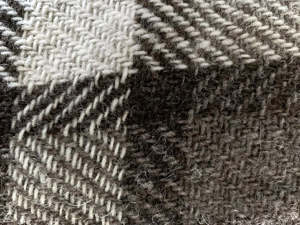
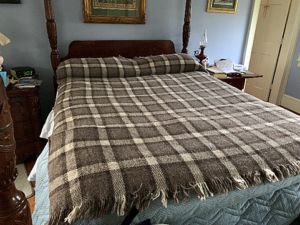
Nothing is a warm as a natural wool blanket on a cold day! Please see the 100% hand woven blankets we offer at Shiloh. Are sheep are humanely and naturally raised right here in Loudoun County. These blankets aren’t made in a chemical plant by the millions. It is expensive to care for the sheep, harvest and spin the fleece and weave one blanket at a time. But if you are looking for a durable and all natural family heirloom, the perfect birthday, wedding or anniversary gift, please consider purchasing a natural wool blanket from Shiloh! And come visit the sheep who contributed the fleece from which it was made!
